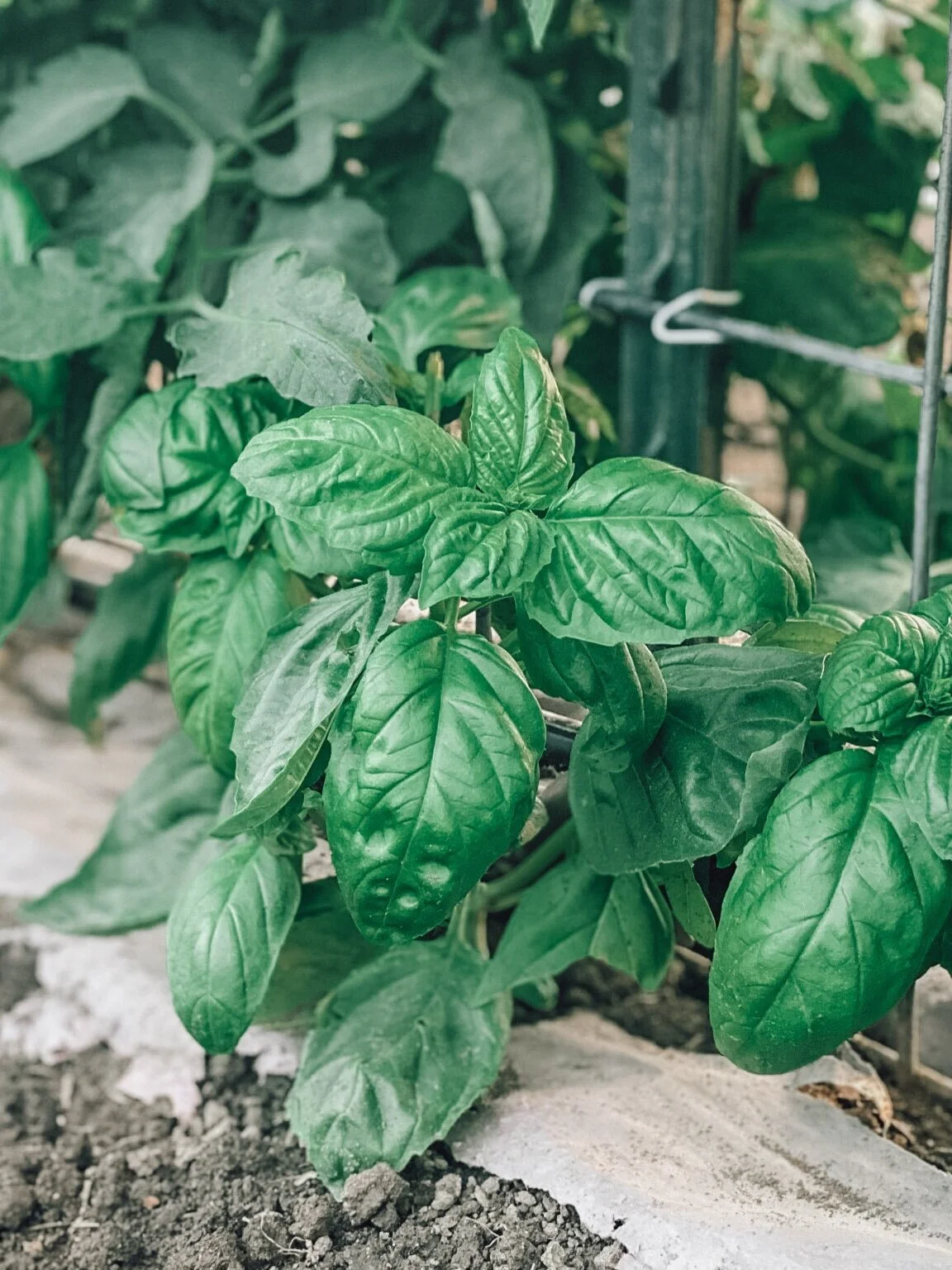Companion Planting for Pest Control
We often get asked, “What are you growing in our garden?”
Sometimes this question stems from general interest in what we’ll be harvesting, but other times it’s asked with a raised eyebrow.
One time Josh was advised by a local farmer to spray the weeds in our garden. You can imagine the size of my eyes when I heard that this question was posed.
For those unfamiliar with our philosophy, first you should know that we are striving for organic growing so we don’t spray.
Second, some might classify what we intentionally place in our garden as either odd or weeds. But we’ve planted these items for specific reasons. Some of these reasons are to keep pests away from our plants, some are to attract pollinators (hello bees and butterflies), and sometimes it’s to put nutrients back into the soil of the garden.
If you’re unfamiliar with companion planting, Google has much to say about it (don’t just take my word for it!). Here are a few of our favorite companion plants and the benefit they add to our garden.
Marigolds
Growing up, my mom planted marigolds in our landscaping. So for some reason, it’s a little weird for me to see a few rows of marigolds in our garden. BUT they are so pretty! And they offer great benefits of attracting nematodes, keeping hornworms away from tomatoes. This year, Josh started marigolds from seed with one row next to the squash and one next to the potatoes.
Borage
Borage attracts pollinators! Very rarely do we go to the garden once borage is in bloom and not see a pollinator buzzing along this plant. A few things to note about borage is that it will keep coming up each year and the plants can really fill out and take up space. NOTE: Borage is poisonous to dogs so if you have a dog that eats out of your garden, you will want to be careful about placement. We have two goldendoodles, and they stay away from the borage in our garden.
Nasturtium
This plant attracts aphids and squash bugs. The benefit this bring to the garden is that as these bugs come to the garden, the hope is that these pests will attach themselves to this plant rather than the plants producing vegetables.
Basil
This herb is purposeful in that we use it in pasta sauce, but it also deters hornworms. So we plant basil between our tomatoes to protect them. Basil can also impact the flavor of the tomatoes, and since much of our tomato crop goes to pasta sauce, we’re all about that flavor!
Garlic
We love to incorporate garlic into our cooking! We plant garlic in the fall and harvest it in the summer. But what you may not know is that garlic deters rabbits, deer, moles, mosquitos, Japanese beetles, aphids, and many other insects. Another way to incorporate garlic in the spring is to plant garlic starting to sprout (from the previous year) in areas of the garden that need some reinforcement to deter pests.
Dill
This herb attracts beneficial insects such as hoverflies and parasitic wasps which prey on insects we do not want to hurt the garden plants such as aphids and hornworms. Dill also deters cabbage loopers which are the source of all those little green worms that love to feed on plants in the brassica family (for our garden this translates to cabbage, broccoli, brussel sprouts, and cauliflower).
Clover
We use both red and white clover. Typically, we use white clover as a living mulch. (Yes, that same clover that gets treated as a weed in lawns. Josh has lots of opinions about this.) It also attracts pollinators and adds nutrients back into the soil. We normally use red clover as a cover crop (future post on the value and benefits on this to come!), so it’s common to see remnants of it along the border and sprout up in our garden throughout the growing season, and its typically left alone as it does more good than harm.
As I reflect on companion plants, it makes me think about my community of relationships. It makes me wonder what kind of plant am I in my community? Am I adding value and helping grow the fruit, or am I causing damage? What kind of plant are you?








